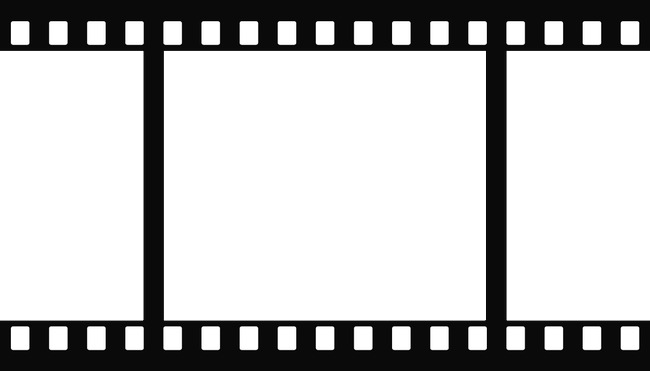
This image has format transparent PNG with resolution 650x371.
You can download this image in best resolution from this page and use it for design and web design.
Filmstrip PNG with transparent background you can download for free, just click on download button.
The filmstrip was a common form of still image instructional multimedia, once commonly used by educators in primary and secondary schools (K-12), overtaken at the end of the 1980s by newer and increasingly lower-cost full-motion videocassettes and later on by DVDs. From the 1940s to 1980s, filmstrips provided an easy and inexpensive alternative to 16 mm educational films, requiring very little storage space and being very quick to rewind for the next use. Filmstrips were large and durable, and rarely needed splicing. They are still used in some areas.
A filmstrip is a spooled roll of 35 mm positive film with approximately thirty to fifty images arranged in sequential order. Like 16 mm film, a filmstrip was inserted vertically down in front of the projector aperture, rather than horizontally as in a slide projector. Therefore, the frame size is smaller than normal 35 mm film. Two image frames of a filmstrip take up the same amount of space as a single 35mm frame, including its guard band, so that a 25 exposure 35mm film can contain 50 filmstrip images. Early celluloid filmstrips had a habit of melting or combusting from the intense and sustained heat of the projection lamp. These were called pictural filmstrips, the first filmstrips that were produced in a complete set.
Typically, a filmstrip's running time was between ten and twenty minutes. Depending on how they were narrated or produced, filmstrips (which often came with an instructor's guide) were flexible enough to be used in both self-paced learning formats or a full classroom. In addition to a standard classroom wall or screen projector, personal film display units were available with a screen size of approximately eight inches diagonal for up-close viewing by one or two people.
The instructor would turn on a filmstrip projector that would show the first frame (image) of the filmstrip. The instructor then turned on a 33 RPM record or cassette tape containing the audio material for the filmstrip which included narration. At the appropriate point, a tone would sound, signaling the instructor to turn a knob, advancing to the next frame. Later, technical improvements allowed the projector to advance the film automatically.
By the later part of the 1960s, such firms as Warren Schloat Productions, CBS, The New York Times Company, Scott Education, Coronet Films, Sunburst Media, and Guidance Associates were producing titles featuring photographs by famous artists and of notable events with a synchronized audio track. The music and narration for the filmstrip originally came on a vinyl record.
In the 1970s, audio technology advanced, and vinyl records gave way to audio cassettes and became useful in providing individualized instruction. Students could now watch and listen to a filmstrip over and over at their own pace. Filmstrips also moved beyond traditional arts and humanities courses, branching into the science, career, vocational and technical subject areas led by such firms as Bergwall Productions and Prentice Hall Media (Formerly Warren Schloat Productions.) There were filmstrips produced in many different subject areas including music, art, language arts, math, business and even home economics.
In this page you can download free PNG images: Filmstrip PNG images free download